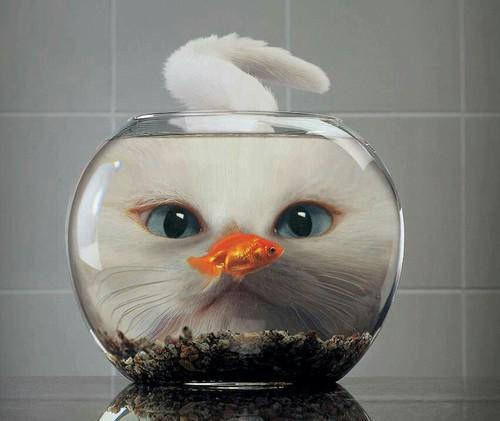This is a work of fiction. Names, characters, businesses, places, events and incidents are either the products of the author’s imagination or used in a fictitious manner. If you find any resemblance to actual persons, living or dead, or actual events, deadly or lively, or actual molecules, carbons or heteroatoms, it is purely coincidental.

Part 1
Five years in, the CEO of Timbermill* Pharmaceuticals, Inc. has run his company into a dead end. Slender but imposing with a mischievous smile, balding, polite and blindingly smart, he founded his little biotech on the pledge of quality, speed and capital-efficient development process. The year was now 2012 and not a single promise he made to the investors came through. The cash was running low, the latest news from the clinical studies were spelling doom and the reports from the CROs were downright disturbing. The original idea behind Timbermill Pharma was to create a virtual biotech company on the East Coast with a team of experts in cancer drug development and commercialization. It was supposed to work by in-licensing drug candidates from academia, setting up collaborations with academic groups to generate biology publications, and by doing the preclinical development at CROs – no labs in house so as to keep the expenses at minimum – the purpose was to get the compounds as quickly as possible into relatively inexpensive small open-label Phase 1 dose-escalation studies. (Cancer trials are ideal because the safety bar is so low and their dosing regimen is typically very short). The positive clinical result would be wrapped into a delicious little parcel and sold = profit!
Except that by the end of 2012 there were no serious takers left for Timbermill and its projects – one by one, they reconsidered after doing their due diligence. Nobody wanted to invest; It was necessary to unload the Timbermill Pharma even on unfavorable terms, with a generous commission. And then, few months later, the impossible actually happened: Our own struggling little company bought them! The acquisition of Timbermill Pharma in 2013 turned out to be one big unmitigated calamity for us; its impact is still felt today (with the same magnitude as the fallout from our CEO cooking Ecstasy on the university campus). As our research director later put it in a moment of weakness: “Only the go-betweens who cashed their finder’s fee benefited from the deal, they took the rest of us for a ride”.
_________________________________________________________________________
The history of the Timbermill Pharma clinical projects illustrates how virtual biotech companies do a disservice to their research projects, to their shareholders and buyers. If someone tries to sell you a “nimble virtual company composed of seasoned industry veterans” who can do it better, faster and cheaper by contracting stuff out to CROs without performing any research in house, it helps to be extra cautious. Even if the formula could somehow work, there is a moral hazard with this setup. You could buy into a mirage of an impressive drug project where everything later turns out to be sketchy and done on the cheap while the problems are skillfully papered over. This is how the faster-cheaper-CRO works: Doing things for appearances and leaving the intractable problems for the buyer to discover later on.
Timbermill Pharma licensed its two clinical candidates from an academic research group in Austria, located about hundred miles from where I was born. (I also met the CEO of Timbermill about a decade earlier when we were both at Pharmacia-Pfizer; it’s a small world). The university research group in Austria had no real experience with drug development and they produced some irreproducible half-baked procedures in their process patents, to create a semblance of a manufacturing method… The clinical compounds from Austria were two inorganic coordination complexes, intended for the treatment of cancer. And both were also ugly-looking metal complex small molecules with a murky mechanism of action. These two compounds had low cytotoxicity on their own and were supposed to work somehow as potency-improving and resistance-reversing add-ons to the established chemotherapy drugs, by indirect mechanism that is synergistic with DNA-targeting cytotoxic drugs, etc. These clinical compounds were nearly impossible to follow in vivo with analytical methods because they were markedly unstable in plasma so there was no PK to speak off; a cherry blossom of a project from the clinical development standpoint. (It is true that cis-platinum and related platinum drugs also have stability issues in solution but they have at least a reasonable PK and a well-defined activated metabolites/degradation products and direct DNA-dependent mechanism of action. None of this was true for the clinical candidates from Austria.)
One compound that Timbermill Pharma put into clinic was a complex of gallium. Unfortunately they could not get a composition of matter patent on it; the compound was known for more than a century. Why they did not bother to perform a simple ligand study to get few close analog complexes not yet described in the literature? – The compounds that they could then patent for themselves before putting millions into a clinical trial. The normal medicinal chemistry mode of thinking was foreign to the Timbermill expert team and at any rate they did not have the lab nor the chemist in house for the job. Going forward just with the help of CROs, they were not able to solve even the relatively straightforward formulation task of making shelf-stable pills that would release the compound at a predictable rate in the gut before going into the clinic with it. The clinical study was a bust.
The gallium compound did not have much biology research to back it up either: lots of hand-waving about remodeling the Golgi apparatus and endoplasmic reticulum and the synergy with cytotoxic DNA active agents but no real insight. The older known gallium compounds that previously failed in the clinic supposedly acted on transferrin, by gumming it when binding gallium in place of iron – it was not clear how this clinical candidate was any different as it was falling apart in the plasma so rapidly that the parent compound could not be detected even right after injection into the animal. The only advantageous thing that the clinical candidate had was its oral availability: previously gallium was tested in cancer therapy mostly in the form of injection, although another orally available compound was also in the clinic – and failed.
Gallium has cumulative kidney toxicity, if you put a small amount of gallium into bloodstream (for example in radioisotope-based gallium scan diagnostic procedure), the kidney damage risk is negligible. Not so with the repeated treatment or with a massive dose… Obviously, the main goal in this project should have been to demonstrate new and unexpected properties of the therapeutic agent. For example, to show the oral compound does not damage kidneys nearly as much as injectable gallium salt at a comparable dose. Unfortunately, Timbermill Pharma failed to show this and the animal studies provided no real PK insight: all that could be observed in plasma was just inorganic gallium and the free ligand. If anything, the early problems with the unreliable release from the pill in humans demonstrated that gallium oral therapy was more problematic than the old injectable forms of gallium.
It was merciful that my colleagues put this clinical candidate from Timbermill Pharma on the shelf shelf just after few cursory PK and biology experiments: The gallium project soon disappeared from our company website and the management treated it with an embarrassed silence.
But the second project we got from them was a real bummer: Timbermill Pharma put its second clinical candidate through the Phase 1 dose escalation open label study – that is to say, by hiding the GMP manufacturing and formulation problems from the FDA – and we unfortunately took it from there. Our company obtained Orphan Designation for this drug candidate based on their study – by submitting the study data to the FDA. Our research director did it while knowing quite well that the dose-escalation Phase 1 trial was invalidated by the Timbermill misconduct and that it should have been re-done a long time ago.
*A long and unrelentingly depressing tale about a fictional company. So I added at least pictures of kittens.





